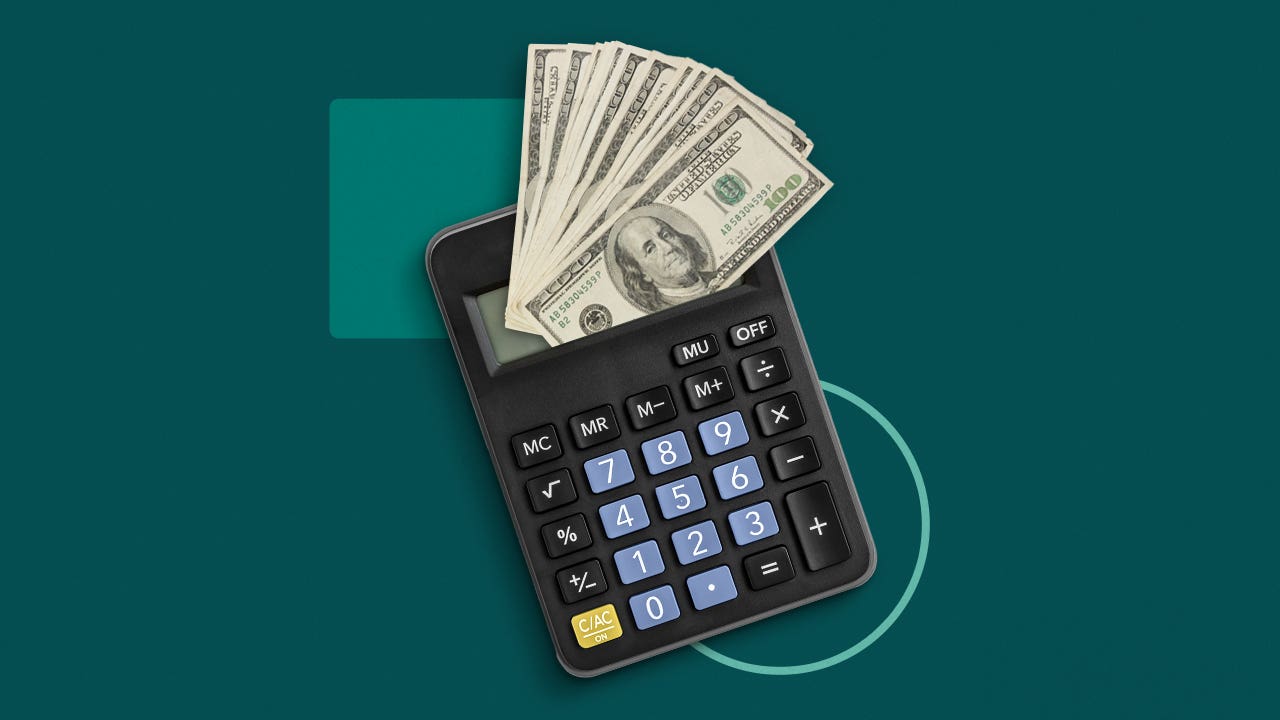:strip_icc()/calculate-loan-interest-315532-Final-5c58592346e0fb000164daf0.png)
How We Make Money
The businesses whose offers you see on this website pay us. Unless our mortgage, home equity, and other home lending products are specifically prohibited by law, this compensation may have an impact on how and where products appear on this website, including, for example, the order in which they may appear within the listing categories. However, this payment has no bearing on the content we post or the user reviews you see here. We don’t include the range of businesses or loan options that you might have.

Our goal at Bankrate is to assist you in making more informed financial decisions. Although we follow stringent guidelines, this post might mention goods from our partners. Heres an explanation for . Bankrate logo.
Bankrate was established in 1976 and has a long history of assisting consumers in making wise financial decisions. We’ve upheld this reputation for more than 40 years by assisting people in making sense of the financial decision-making process and providing them with confidence regarding their next course of action.
You can rely on Bankrate to prioritize your interests because we adhere to a rigorous editorial policy. All of the content we publish is objective, accurate, and reliable because it is written by highly qualified professionals and edited by subject matter experts.
So that you can feel secure when investing your money, our loans reporters and editors concentrate on the topics that matter most to consumers: the various loan options, the greatest rates, the best lenders, how to pay off debt, and more. Bankrate logo.
You can rely on Bankrate to prioritize your interests because we adhere to a rigorous editorial policy. Our team of distinguished editors and reporters produces truthful and precise content to assist you in making wise financial decisions.
We value your trust. Our goal is to give readers reliable, unbiased information, and we have established editorial standards to make sure that happens. Our reporters and editors carefully verify the accuracy of the editorial content they produce, making sure you’re reading true information. We keep our editorial staff and advertisers apart with a firewall. No direct payment from our advertisers is given to our editorial staff.
The editorial staff at Bankrate writes for YOU, the reader. Providing you with the best guidance possible to enable you to make wise personal finance decisions is our aim. We adhere to stringent policies to guarantee that advertisers have no influence over our editorial content. Advertisers don’t pay our editorial staff directly, and we carefully fact-check all of our content to guarantee accuracy. Thus, you can be sure that the information you’re reading, whether it’s an article or a review, is reliable and reputable. Bankrate logo.
How we make money
You have money questions. Bankrate has answers. For more than 40 years, our professionals have assisted you in managing your finances. We always work to give customers the professional guidance and resources they need to be successful on their financial journey.
Because Bankrate adheres to strict editorial standards, you can rely on our content to be truthful and accurate. Our team of distinguished editors and reporters produces truthful and precise content to assist you in making wise financial decisions. Our editorial team produces factual, unbiased content that is unaffected by our sponsors.
By outlining our revenue streams, we are open and honest about how we are able to provide you with high-quality material, affordable prices, and practical tools.
Bankrate. com is an independent, advertising-supported publisher and comparison service. We receive payment when you click on specific links that we post on our website or when sponsored goods and services are displayed on it. Therefore, this compensation may affect the placement, order, and style of products within listing categories, with the exception of our mortgage, home equity, and other home lending products, where legal prohibitions apply. The way and location of products on this website can also be affected by other variables, like our own unique website policies and whether or not they are available in your area or within your own credit score range. Although we make an effort to present a variety of offers, Bankrate does not contain details about all financial or credit products or services.
- To make money off of the amount borrowed, lenders can charge either simple or amortized interest.
- While mortgages and certain auto loans have an amortization schedule, short-term loans like payday loans and car title loans, as well as the majority of personal loans and federal student loans, have simple interest.
- Over the course of the loan, payments for both simple and amortized interest loans stay the same. The distinction is that, in an amortization schedule, the amount allotted to interest payments varies over the course of repayment.
Lenders make money when you take out a loan because they charge you interest. Certain lenders impose simple interest rates, whereas others apply interest in accordance with an amortization schedule.
Your credit score, the amount borrowed, and the length of the repayment term are some of the other variables that will affect the total cost of your loan in addition to the type of interest charged.
How to calculate simple interest on a loan
If a lender employs the simple interest method, calculating loan interest is simple as long as you have the necessary data at your disposal. To determine the total cost of interest, you’ll need to know your loan term, interest rate, and principal amount.
Although the monthly payment is set, the interest you will pay is determined by the amount of principal that is still owed. Therefore, provided the lender does not impose a prepayment penalty, you may be able to save a significant sum of money on interest if you pay off the loan early.
How to calculate simple interest
You can calculate your total interest by using this formula:
- Interest is computed as principal loan amount x interest rate x loan term.
The simple interest formula would be $20,000 x 5% if you were to take out a $20,000 loan with a five-year term and a 5% interest rate. 05 x 5 = $5,000 in interest.
If you don’t want to do the math by hand, you can run the numbers using a basic interest calculator. Additionally, the best way to minimize calculation errors during the process is to use a calculator.
Who benefits from simple interest
Borrowers who pay their bills on schedule or early get simple interest. Compared to loans with compound interest, borrowers can save money on these loans because interest is only based on the loan principal.
Types of loans that use simple interest
Simple interest is less common, but it can still be found on some personal, auto, and mortgage loans, as well as short-term loans like payday and car title loans.
Those with student loans may also pay simple interest. For instance, all federal student loans charge simple interest.
How to calculate amortizing interest on a loan
Many lenders charge interest based on an amortization schedule. This includes mortgages and some auto loans. These loans have fixed monthly payments; instead, the loan is paid back over time in equal installments. However, how the lender charges interest changes over time.
However, the primary distinction between simple interest loans and amortizing loans is that the former typically have higher initial payments due to interest. This implies that a lesser amount of your monthly payment is applied to the principal amount of your loan.
But as time goes on and the date of your loan payback approaches, the table changes. The majority of your monthly payments are applied to your principal balance by the lender toward the end of your loan, with less going toward interest fees.
How to calculate amortized interest
Here’s how to calculate the interest on an amortized loan:
- Divide the interest rate by the total amount of payments you have scheduled for that year. If you make monthly payments with an interest rate of 6%, you would divide 0 06 by 12 to get 0. 005.
- To calculate the amount of interest you will pay each month, multiply that figure by the remaining balance on your loan. The interest you would pay in the first month on a $5,000 loan balance would be $25.
- To calculate the amount of principal you will pay in the first month, deduct that interest from your scheduled monthly payment. If you have been informed by your lender that your $430 fixed monthly payment 33, you will pay $405. 33 toward the principal for the first month. That amount gets subtracted from your outstanding balance.
- For the next month, repeat the procedure with your updated loan balance, and keep doing so for every month after that.
The amortization schedule for a $5,000 personal loan with an 11-year term is shown here. As of January 2024, the average interest rate on personal loans was 56 percent.
| Payment Date | Payment | Principal | Interest | Total Interest | Balance |
|---|---|---|---|---|---|
| Oct 2023 | $442.65 | $395.49 | $47.17 | $47.17 | $4,604.51 |
| Nov 2023 | $442.65 | $399.22 | $43.44 | $90.60 | $4,205.29 |
| Dec 2023 | $442.65 | $402.99 | $39.67 | $130.27 | $3,802.31 |
| Jan 2024 | $442.65 | $406.79 | $35.87 | $166.14 | $3,395.52 |
| Feb 2024 | $442.65 | $410.62 | $32.03 | $198.17 | $2,984.90 |
| Mar 2024 | $442.65 | $414.50 | $28.16 | $226.33 | $2,570.40 |
| Apr 2024 | $442.65 | $418.41 | $24.25 | $250.58 | $2,151.99 |
| May 2024 | $442.65 | $422.35 | $20.30 | $270.88 | $1,729.64 |
| Jun 2024 | $442.65 | $426.34 | $16.32 | $287.19 | $1,303.30 |
| Jul 2024 | $442.65 | $430.36 | $12.29 | $299.49 | $872.94 |
| Aug 2024 | $442.65 | $434.42 | $8.23 | $307.72 | $438.52 |
| Sep 2024 | $442.65 | $438.52 | $4.14 | $311.86 | $0.00 |
Because it requires a lot of math to calculate amortization schedules, Bankrate offers a loan calculator that does the work for you. To generate your amortization schedule, simply input the starting amount, the number of months, and the interest rate into the calculator.
Who benefits from amortized interest
Lenders are the primary beneficiaries of amortized interest. The length of the loan is extended and the interest paid increases over time when payments are applied to both principal and interest.
Types of loans that use amortized interest
Amortized interest is a common feature of installment loans, such as debt consolidation, mortgages, and auto loans. You may also encounter amortized interest on home equity loans.
Factors that can affect how much interest you pay
Numerous variables can impact the interest rate you pay on a loan. These are the main factors that can affect the total amount you pay back over the course of the loan.
The amount of interest you pay a lender is largely determined by the amount you borrow (your principal loan amount). You will pay more interest because borrowing more money puts the lender at greater risk.
You will pay $2,645 if you borrow $20,000 at a 5% interest rate for five years. 48 in interest on an amortized schedule. If you keep all other loan factors the same (e. g. , rate, term, and interest type) but raise the loan amount to $30,000, you will pay $3,968 in interest over the course of five years. 22. Lightbulb Takeaway.
Don’t borrow more than you need to. First, do some math to figure out exactly how much money you need.
The interest rate on your loan is mostly determined by your credit score. Because lenders view people with less-than-perfect credit as higher risk than those with excellent credit, those with less-than-perfect credit typically pay higher interest rates.
Let’s compare a 5% loan with a 7% loan using the previous example ($20,000, five-year term, amortized interest) as a basis. The total interest paid on the five percent loan is $2,645 48. The interest expense increases to $3,761 if the interest rate rises to 7%. 44. Lightbulb Takeaway.
Before taking out a loan, it could make sense to raise your credit score in order to increase your chances of getting a better interest rate and paying less overall.
The length of time a lender agrees to extend your payments is known as a loan term. Thus, your loan term is 60 months if you are eligible for a five-year auto loan. However, the typical loan terms for mortgages are 15 or 30 years.
Your interest rates can be greatly impacted by the length of time it takes you to repay the money you borrowed.
Although higher monthly payments are typically associated with shorter loan terms, you will pay less interest because the repayment period is reduced. Extended loan terms can lower your monthly payment amount, but because you’re delaying repayment, you’ll end up paying more interest overall. Lightbulb Takeaway.
Make sure you go over the figures in advance and determine how much you can afford to pay each month. Choose a loan duration that fits your spending plan and total amount of debt.
When figuring out how much interest you will pay on a loan, you should also take your lender’s payment schedule into account. Although weekly or biweekly payments are sometimes required for business loans, most loans require monthly payments. You may be able to save money if you choose to make payments more frequently than once a month.
Making more frequent payments can help you pay down your loan’s principal more quickly. Often times, like when a lender assesses compound interest, you could save a significant amount of money by making additional payments. Make sure, though, that the payments are used to reduce the principal. Lightbulb Takeaway.
Don’t assume that you can pay off your loan in full each month. Making payments more frequently than necessary is a smart move if you want to lower the total interest you pay on a loan.
The monthly payment amount that you have to make on your loan is known as the repayment amount.
Paying more than the minimum amount due each month can save you money, just as making loan payments more frequently can reduce interest costs. Lightbulb Takeaway.
Ask the lender if any additional money you decide to add to your monthly loan payment will go toward your principal if you’re thinking about doing so. If so, using this tactic to pay off debt and minimize interest can be very beneficial.
How to get the best loan interest rates
There are several ways you might be able to increase your chances of getting the best possible interest rate on a loan:
- Boost your credit score: People with the best credit scores typically have access to the most affordable interest rates.
- Choose a shorter payback period: Short-term loans always have the lowest interest rates. If you are able to make the payments, you will eventually pay less interest.
- Lower your debt-to-income ratio (DTI): The monthly debt you pay off as a percentage of your gross monthly income is known as your DTI. It is almost equally important as your credit score in order to be eligible for a competitive loan.
- Compare offers: Every lender has a different loan product; they aren’t a one-size-fits-all kind of thing. Make sure you prequalify with at least three different lenders to guarantee the best rates. Without affecting your credit, prequalification enables you to view the terms and interest rates that you can receive from a particular lender.
It’s critical to determine your potential interest rate before taking out a loan in order to fully comprehend the costs associated with borrowing. Find out from the lender if interest is calculated using an amortization schedule or the simple interest formula, and then run the numbers using the relevant formula or an online calculator.
Additionally, pay attention to the elements that influence the interest rate you pay. If you want to keep more of your hard-earned money in your pocket, it could be worthwhile to borrow less or shorten the repayment period. Additionally, you ought to raise your credit score prior to applying and compare rates to make sure you’re getting the best possible loan.




FAQ
What is the formula to calculate interest on a loan?
How to calculate simple interest. The following formula can be used to determine your total interest: principal loan amount x interest rate x loan term = interest.
How do you calculate total interest to be paid?
Interest = Principal × Rate × Tenure is the formula used to calculate interest rates. The interest rate on loans or investments can be found using this formula.
What is the formula for amount of interest paid?
Interest Expense = Principal x Rate x Time is the basic formula for calculating interest expenses. r = The rate of interest expressed as a decimal.
How do you figure out a loan payment with interest?
Multiply the loan balance by the annual interest rate, then divide the result by the total number of payments due each year to determine interest-only loan payments. As an illustration, interest-only payments on a $50,000 loan with a 4% interest rate and a 2010 year repayment term would total $166. 67.
Read More :
https://www.bankrate.com/loans/personal-loans/how-to-calculate-loan-interest/
https://www.lendingtree.com/personal/how-to-calculate-loan-interest/
